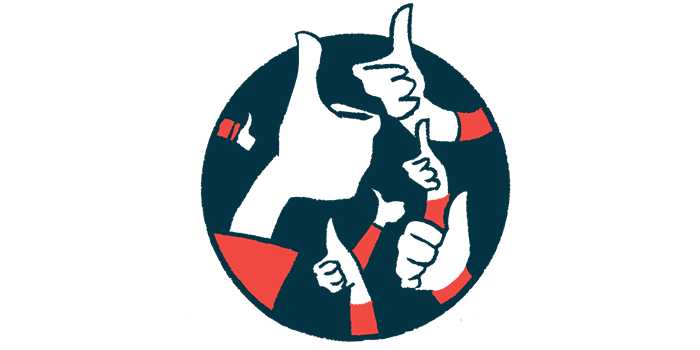FDA OKs Brineura as treatment for Batten disease CLN2 in all ages
Enzyme replacement therapy had been approved for patients 3 and older
Written by |

The enzyme replacement therapy Brineura (cerliponase alfa) is now approved by the U.S. Food and Drug Administration (FDA) as a treatment for CLN2 disease, also known as late infantile Batten disease, in children of all ages.
The FDA previously approved Brineura to slow the loss of walking or crawling ability in CLN2 patients 3 and older. The approval now extends to patients younger than 3 as well, regardless of whether they show symptoms.
“Today’s approval represents a significant step forward in enabling children to be treated with BRINEURA as early as possible, when we can have the greatest impact in altering the natural course of disease,” Hank Fuchs, MD, president of worldwide research and development at BioMarin, the company that sells Brineura, said in a press release.
CLN2 disease is caused by mutations in the gene that provides instructions to make the TPP1 enzyme. This enzyme is normally needed to clear out certain types of molecular waste inside cells; in CLN2, a lack of functional TPP1 leads to a toxic buildup of waste that damage cells, ultimately driving disease symptoms.
Brineura works by providing the body’s cells with a functional version of the TPP1 enzyme, facilitating the clearance of cellular waste to slow the progression of the disease. The therapy is administered every other week by infusion directly into the fluid around a patient’s brain through an access device that’s surgically implanted in the skull.
Early treatment for Batten disease key
Since it works to clear the buildup of toxic waste, which progressively damages cells, Brineura is thought to be most effective when treatment is started as early as possible. The expanded FDA approval is expected to help facilitate early treatment.
“We know that every day counts for families affected by serious genetic conditions such as CLN2 disease,” Fuchs said. The company has been “working diligently since Brineura’s initial approval to support this expanded use in children of all ages, even before they begin to show symptoms,” he added.
Ineka Whiteman, PhD, head of research and medical affairs at the Batten Disease Support, Research, and Advocacy Foundation, said that having the opportunity for such early treatment “provides newfound hope for the families impacted by this rapidly progressive disease.”
With earlier treatment now a distinct possibility, advocates are redoubling efforts to help people with CLN2 disease get diagnosed as early as possible. In particular, there is a renewed focus on newborn screening — programs that test all babies for congenital disorders within a few days after birth. In general, newborn screening is only offered for diseases that have established treatments available to patients, and now CLN2 has real potential to be added to that list.
“Importantly, this expanded indication provides further impetus for early diagnosis of CLN2 disease, as we continue advocating for inclusion of CLN2 disease on the RUSP (Recommended Uniform Screening Panel) for newborn screening,” Whiteman said.
The FDA’s authorization of Brineura for children younger than 3 was based on data from a Phase 2 clinical trial called Study 190-203 (NCT02678689). In this open-label study, 14 children, eight of whom were younger than 3 at the study’s start, were treated with Brineura for about three years.
Results showed that the safety of Brineura in these young children was comparable to its safety in older patients. Common side effects of Brineura include fever, vomiting, seizures, allergic reactions, bruising, headache, device-related infections, irritability or feeling jittery, low blood pressure, and abnormal heart rhythms.
Data from Study 190-203 also indicated that treatment with Brineura slowed decline in motor function and delayed disease onset in children with CLN2 disease, including those who were younger than 3. Patients were assessed via the CLN2 Clinical Rating Scale, which rates various functional domains on a scale from three (normal function) down to zero (severe impairment).
After about three years of follow-up, none of the children experienced a decrease in scores related to motor function in language development. In fact, all seven patients who started with maximum scores of 3 in language and motor function domains retained maximum scores throughout the entire study. To put that in perspective, in natural history data, more than half of children with CLN2 disease experienced notable declines in these domains over a similar follow-up time.





